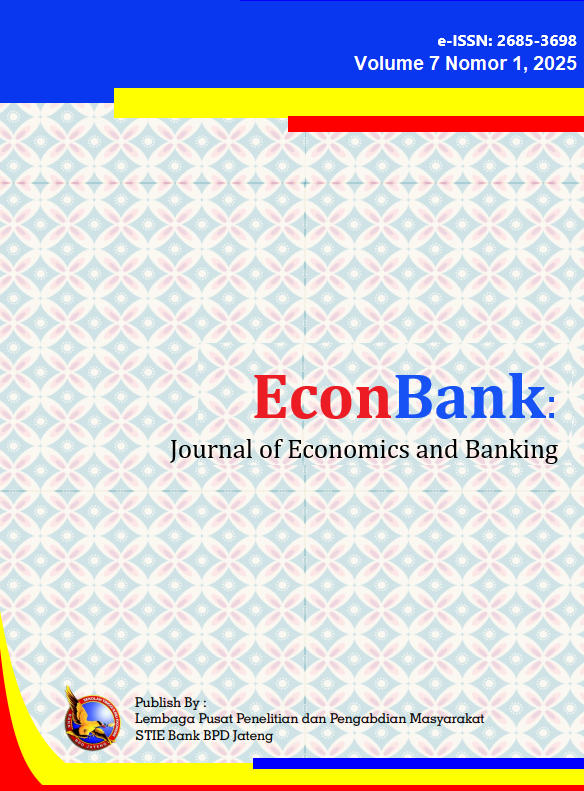Measuring Digital Inclusiveness and Its Impact on Gender Inequality for Women
Abstract
This study investigates whether digitalization reduces or reinforces the gender gap in working hours in Indonesia. Using the 2023 National Labor Force Survey (SAKERNAS) and the Oaxaca–Blinder decomposition approach, it compares the working hour disparities between men and women in both digital and non-digital employment. The findings reveal that the gender gap in working hours is relatively smaller in the digital sector and is largely explained by observable characteristics such as education, formal employment, and training. In contrast, a significant portion of the gap in the non-digital sector remains unexplained, indicating strong influences of social norms and structural biases. These results suggest that digitalization can enhance women's labor market inclusion if supported by affirmative policies that improve access to technology and training. Meanwhile, the non-digital sector still requires broader structural reforms to achieve gender equality in working hours.
References
Fernández-Ardèvol, M., Prieto, P., & Misuraca, G. (2023). Intersectionality and the digital divide: The role of gender, age and education. Gender and Education, 35(4), 397–416. https://doi.org/10.1080/09540253.2022.2107894
Lopez, F. L., Benito, B., & Garcia, M. A. (2024). Gender inequality and precarious work in the digital economy. Heliyon, 10(3), e18056. https://doi.org/10.1016/j.heliyon.2024.e18056
Perifanou, M., Economides, A. A., & Tzafilkou, K. (2023). Women’s digital inclusion and empowerment. Systems, 12(5), 162. https://doi.org/10.3390/systems12050162
Pujol, J., Torrecilla, C., & Martínez, C. (2022). Digital gender divide in rural areas. Information Technology for Development, 28(3), 534–552. https://doi.org/10.1080/02681102.2022.2042545
Wulan, M., & Atin, N. (2023). Time-related underemployment among women in Indonesia’s gig economy. Asian Social Work and Policy Review, 17(1), 45–58. https://doi.org/10.1111/aswp.12345
Chung, H., & van der Lippe, T. (2020). Flexible working, work–life balance, and gender equality: Introduction. Social Indicators Research, 151(2), 365–381. https://doi.org/10.1007/s11205-018-2025-x
Graham, M., Hjorth, I., & Lehdonvirta, V. (2017). Digital labour and development: Impacts of global digital labour platforms and the gig economy on worker livelihoods. Transfer: European Review of Labour and Research, 23(2), 135–162. https://doi.org/10.1177/1024258916687250
Graham, M., & Dutton, W. H. (2019). Platform inequalities: The socio-economic stratification of digital labour. In The sharing economy (pp. 177–196). MIT Press.
Hilbert, M. (2011). Digital gender divide or technologically empowered women in developing countries? A typical case of lies, damned lies, and statistics. Women's Studies International Forum, 34(6), 479–489. https://doi.org/10.1016/j.wsif.2011.07.001
Hunt, A., & Samman, E. (2019). Gender and the gig economy: Critical steps for evidence-based policy. ODI Working Paper. https://odi.org/en/publications/gender-and-the-gig-economy-critical-steps-for-evidence-based-policy/
Sorgner, A., Bode, E., & Krieger-Boden, C. (2017). The effects of digitalization on gender equality in the G20 economies. Economics: The Open-Access, Open-Assessment E-Journal, 11(1), 1–27. https://doi.org/10.5018/economics-ejournal.ja.2017-10
Wood, A. J., Graham, M., Lehdonvirta, V., & Hjorth, I. (2019). Networked but commodified: The (dis)embeddedness of digital labour in the gig economy. Sociology, 53(5), 931–950. https://doi.org/10.1177/0038038519828906
Zheng, Y., & Walsham, G. (2021). Inequality of what? An intersectional approach to digital inequality under Covid-19. Information and Organization, 31(1), 100341. https://doi.org/10.1016/j.infoandorg.2021.100341

















